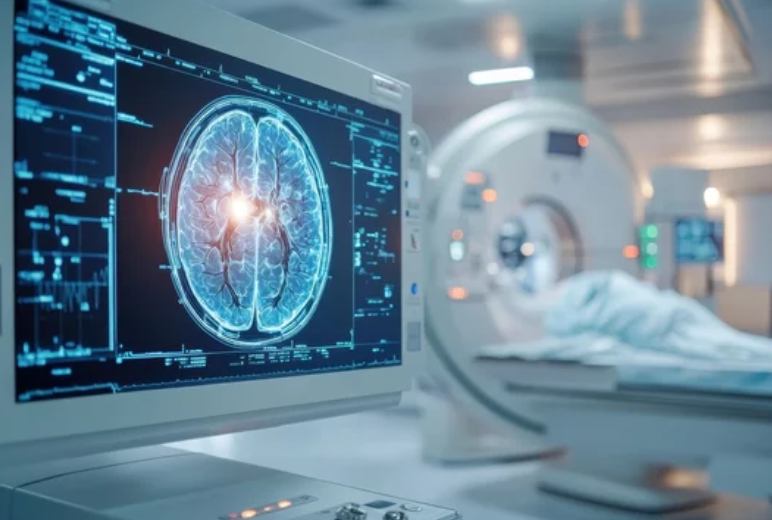Pediatric healthcare is entering a new era, driven by advanced imaging technologies that prioritize safety, precision, and early diagnosis. Among these technologies, Magnetic Resonance Imaging (MRI) has emerged as an indispensable tool in child-specific care. Unlike X-rays or CT scans, MRI does not expose children to ionizing radiation, making it ideal for repeated imaging in sensitive developmental stages.
MRI’s ability to provide high-resolution images of soft tissues, organs, and the nervous system makes it a cornerstone of pediatric diagnostics. From detecting congenital anomalies to monitoring chronic conditions, MRI is shaping the future of personalized, child-centered healthcare.
Why MRI Is Essential in Pediatric Care
Children are not simply “small adults.” Their physiology, anatomy, and disease patterns differ significantly, demanding tailored imaging approaches. MRI addresses these needs by offering:
- Radiation-Free Imaging: Safeguards developing tissues from long-term radiation risks.
- High-Resolution Visualization: Detects subtle structural anomalies in the brain, heart, liver, and musculoskeletal system.
- Comprehensive Functional Assessment: Evaluates organ function, blood flow, and tissue health without invasive procedures.
- Repeatable Imaging: Suitable for ongoing monitoring of chronic conditions like congenital heart disease, cancer, or neurological disorders.
By combining these advantages, MRI supports early diagnosis, precise treatment planning, and longitudinal monitoring, all crucial for improving pediatric outcomes.
MRI in Pediatric Neurology
Neurological disorders are among the most critical areas where MRI plays a transformative role in pediatrics. Children with developmental delays, seizures, or congenital brain malformations benefit from:
- Structural MRI: Identifies abnormalities such as cortical dysplasia, hydrocephalus, or tumors.
- Functional MRI (fMRI): Maps brain activity, assisting in surgical planning for epilepsy or tumor resection.
- Diffusion Tensor Imaging (DTI): Visualizes white matter tracts, aiding in the assessment of developmental disorders and traumatic brain injuries.
- Magnetic Resonance Spectroscopy (MRS): Detects metabolic changes in the brain, offering early insight into neurodegenerative or metabolic diseases.
Early and accurate MRI diagnosis allows pediatric neurologists to intervene promptly, mitigating long-term developmental impacts and improving quality of life.
Cardiac MRI in Children
Congenital heart disease (CHD) affects millions of children globally, making early and accurate cardiac imaging essential. MRI provides:
- Non-Invasive Visualization of Heart Structures: Detects structural defects such as septal defects, valve anomalies, or abnormal vessel connections.
- Functional Assessment: Measures blood flow, ventricular function, and cardiac output.
- Pre- and Post-Surgical Evaluation: Monitors surgical repairs and tracks recovery without radiation exposure.
- Long-Term Follow-Up: Enables repeated imaging throughout growth without cumulative radiation risks.
Cardiac MRI is increasingly standard in pediatric cardiology, ensuring safe and precise evaluation of congenital and acquired heart conditions.
Musculoskeletal MRI in Pediatrics
MRI is invaluable for diagnosing pediatric orthopedic conditions, sports injuries, and growth-related musculoskeletal issues:
- Bone and Joint Disorders: Detects fractures, osteomyelitis, and early-stage osteochondritis.
- Soft Tissue Imaging: Evaluates ligaments, tendons, cartilage, and muscles with high clarity.
- Spinal Disorders: Assesses scoliosis, spinal cord malformations, and intervertebral disc anomalies.
- Sports Medicine: Monitors overuse injuries and aids rehabilitation for young athletes.
By capturing detailed musculoskeletal anatomy, MRI informs both surgical and non-surgical treatment strategies, optimizing recovery and long-term function.
MRI in Pediatric Oncology
Cancer treatment in children requires precision, as growth and development must be preserved while targeting malignancies. MRI is central to pediatric oncology:
- Tumor Detection and Characterization: Provides detailed images of soft tissue, brain, liver, and bone tumors.
- Treatment Planning: Assists in surgical, radiation, and chemotherapy planning by delineating tumor boundaries.
- Monitoring Therapy Response: Evaluates changes in tumor size, vascularity, and tissue composition over time.
- Reducing Radiation Exposure: MRI allows frequent monitoring without the risks associated with CT scans.
Advanced MRI techniques such as functional imaging and diffusion-weighted imaging are enhancing the precision and safety of pediatric cancer care.
Challenges and Innovations in Pediatric MRI
Pediatric MRI faces unique challenges, including motion artifacts, anxiety, and difficulty with long scan times. Recent innovations are addressing these issues:
- Fast Imaging Protocols: Reduce scan times to minimize sedation needs.
- Child-Friendly Environments: Use of visual and audio distractions to ease anxiety.
- Open and Wide-Bore MRI Systems: Provide more comfort and reduce claustrophobia.
- AI-Assisted Imaging: Enhances image quality, corrects motion artifacts, and accelerates interpretation.
- Portable MRI Systems: Expand access to remote or underserved regions.
These advancements are making MRI more accessible, safer, and child-centered, ensuring optimal diagnostic outcomes.
Future Directions: Personalized Pediatric MRI Care
The future of pediatric MRI lies in integration, personalization, and predictive medicine:
- Multimodal Imaging: Combining MRI with PET or CT for comprehensive assessment when necessary.
- Quantitative MRI: Tracks tissue composition changes for early disease detection and treatment monitoring.
- AI-Powered Predictive Analytics: Forecasts disease progression, growth patterns, and therapy response.
- Routine Screening Programs: Potential for early detection of congenital or chronic conditions in at-risk populations.
These innovations position MRI as a central tool in preventive and precision pediatric medicine, supporting healthier childhood development and long-term wellbeing.
Conclusion: MRI as a Pillar of Pediatric Healthcare
MRI has transformed pediatric departments by offering safe, precise, and comprehensive imaging tailored to children’s unique needs. From neurology and cardiology to musculoskeletal and oncology care, MRI provides clinicians with unparalleled insight into developing bodies and organs.
As technology continues to evolve, pediatric MRI will become faster, smarter, and more integrated, supporting early diagnosis, personalized treatment, and long-term monitoring. In doing so, MRI is not just advancing imaging—it is redefining child-specific care and shaping the future of pediatric medicine.
Also Read :
